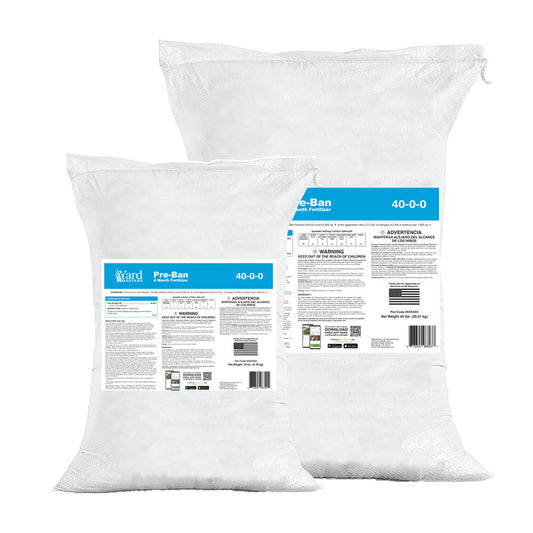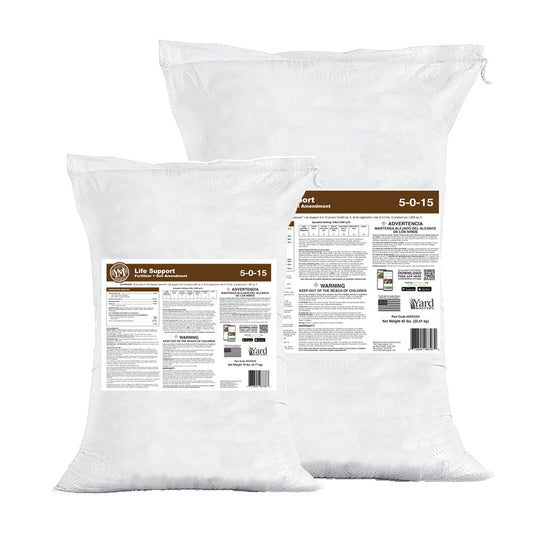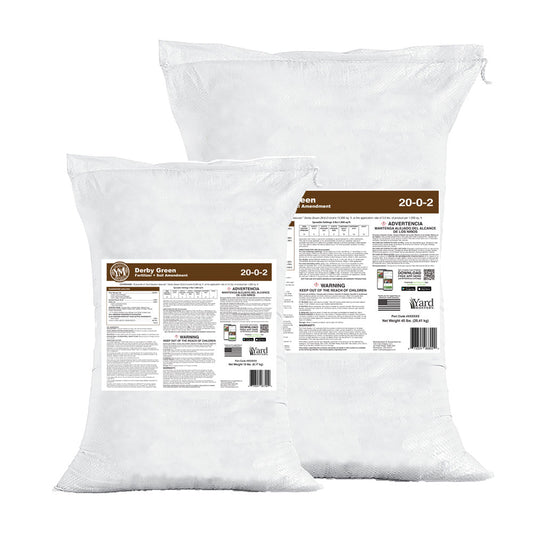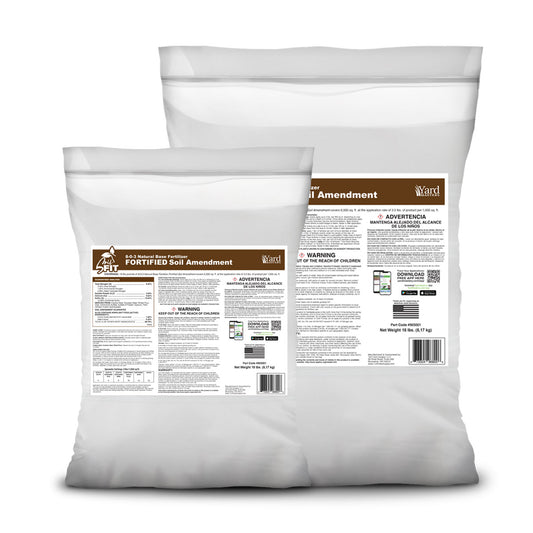Here we go my friends - continuing with the advanced lawn tips - lawn spraying tips - that show you how to spray lawns with options. If you are new here, this is part 3 of a series and is designed to help you expand your spraying strategy. There is also PRIVATE video training at the VERY bottom of this post - but it's important to read here also - to help avoid confusion.
Quick Review thus far:
Part 1 gives you an introduction to spraying with TeeJet tips.
https://thelawncarenut.com/blogs/news/how-teejet-tips-make-spraying-lawn-products-better
Part 2 gives you some advanced tips for spraying and teaches you the “why” behind them, including why I always talk in “1 gallon covers 1,000 sq ft” terminology:
https://thelawncarenut.com/blogs/news/using-sprayer-tips-to-expand-your-liquid-application-strategy
I also made a video to show you, in great detail, how to spray a lawn using two different tips that offer flexibility in walk speed:
Now in this post, I’m going to throw all that out the window and show you some even more advanced spray techniques. I’m going to stick with the same 2 gallon battery sprayer we have been using but this time, I’m going to show you how to make that two gallon sprayer stretch to cover a 4,000 sq ft area.
Yes, that’s right, we are throwing out the standard of 1 gallon of spray mix covers 1,000 sq ft and we are going rogue!
Please understand, this is an advanced strategy - I usually keep EVERYTHING in “1 gallon covers 1,000 sq ft” because it’s simple and keeps my strategies consistent across the board. But it’s not a hard and fast rule. Those of you who are more advanced will appreciate the flexibility I’m going to teach you here.
Dilution Rates and Ratios
Almost all liquid products will give you their recommended “dilution rates” on the label. These dilution rates/ratios are there to make sure that your mix goes down with enough water to give you a consistent application, but also just to make sure your mix isn’t too “thick” where it can clog up your equipment.
When I teach you guys that “mix XXXX amount in one gallon of water and 1 gallon of spray mix covers 1,000 sq ft” I am always mindful of the recommended dilution rate. Keep in mind, the “minimum dilution rate” is just that - the minimum. You can dilute your product to a greater degree if you want, just not less. Whenever I teach you “mix product XXXX in 1 gallon of water, and that 1 gallon of spray mix covers 1,000 sq ft” I am always well within the minimum dilution rate/ratio of each product - and that is why it works as a good standard for everything, because everything fits. But that is also quite restrictive.
Now let’s look at a real world example and use the dilution rate/ratio to allow us to make a “more concentrated mix” that still remains within the label dilution rate but in turn allows us to cover much more ground.
This is the label from RGS (Root Growth Stimulant) from Greene County. The minimum dilution rate, according to the label, is 7:1.
This means that your final spray mix should be 7 parts water and 1 part concentrate, or stated another way, there should be 7 times more water than concentrate in your final mix.

1 gallon of water is 128 ounces.
If we are going with a 7:1 dilution rate, that means we have 8 total parts in the mix.
128/8 = 16
Each part is 16 ounces.
Remember, 7 parts are water and 1 part is RGS concentrate.
This means then, in theory, I could actually put 16 ounces of RGS into 1 gallon of water and I’d be within the labeled guidelines.
The “application rate” on RGS is 3-6 ounces / 1000 sq ft. (see the label pic in this post). Let’s just stick with the 3oz/1000 rate for purposes of this article.
This means we could make up a mix of 1 gallon that includes 112oz of water and 16 oz of RGS and we would be right at the minimum dilution ratio of 7:1. Since our rate is 3oz/1000 this means that one gallon of spray mix could cover 5,333 sq ft.
If we had a 2 gallon sprayer like the Field King we have been using in this series, that would be 2 gallons of spray mix (224 oz water, 32 oz RGS) and could cover 10,666 sq ft.
That is extreme though, and with our sprayer and available tips, we would not be able to get it done. It takes quite a while to walk 10,000 sq ft so we would need a tip that REALLY restricts the flow to give us the time needed, or we’d need a complicated setup with multiple tips that could give us a very wide spray pattern. I’m not going to get that in depth here, instead, let’s flex but not quite so extreme. If you wanted to cover that much area, it may be best to upgrade to a 4 gallon backpack sprayer. But for now, let’s stay with the 2 gallon Field King sprayer.

How about if we just double our capacity for this test. Let’s stretch our 2 gallon sprayer to cover 4,000 sq ft. That is double the square footage that we have been covering up until now and won’t require any extreme mods to your equipment… just a different tip.
So now we need to refer back to our TeeJet chart. I am choosing the gray tip for this exercise.
Spray Summary
RGS application rate 3oz/1000
Sq Ft to cover: 4,000
Sprayer capacity: 2 gallons or 256 oz.
Sprayer PSI: 20
Gray Tip @ 20PSI: .42 gallons per minute
Sprayer Time to Empty: 4 minutes, 45 seconds

Spray Details
So I have chosen today to go with the gray tip, TF-3.
I am using the same sprayer we have been using, the Field King 2-gallon battery sprayer which we know puts out 20 PSI.
According to the chart, the gray tip will allow flow of .42 gallons per minute at 20PSI. Since I have a 2 gallon sprayer, that means it will take 4.76 minutes to empty it. That equates to 4 minutes and 45 seconds.
I can get a lot of walking done in that amount of time. I bet in fact, that I could get 4,000 sq ft sprayed out in that time easily. Did you ever think that you could get 4,000 sq ft of lawn space I can get a lot of walking done in that amount of time. I bet in fact, that I could get 4,000 sq ft sprayed out in that time easily. Did you ever think that you could get 4,000 sq ft of lawn space sprayed from just a 2 gallon sprayer? Knowing the dilution rates we talked about above, you can!
Let’s Make Sure It’s WIthin The Dilution Ratio
I have 2 gallons total available to me, that is 256 oz.
The RGS I want to apply today is going down at 3oz/1000, so that is 12oz total needed for 4,000 sq ft.
256/12=21.3 -- I am going to round that down to 21 to make it simple.
So this mix will actually be at a 20:1 ratio, which is well within the 7:1 minimum.
If you are not following the math here, just think it out logically. We have 12 oz of concentrate. I have 256 oz total space in the tank.
12 goes into 256, 21 times. So my concentrate takes up 1 “part” of the 21 total parts. So this mix is 20:1.
20 parts water to 1 part concentrate.
Follow?
Now here I am spraying it out knowing that I am well within the 7:1 dilution ratio required on the label.






